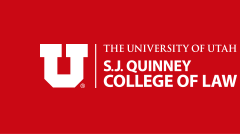Document Type
Article
Publication Date
4-2020
Abstract
Freedom of the press in America is at a critical crossroads in a number of ways, but one stands out as most fundamental: the stark impact of the current debate over “Post-Truthism.” Press freedom jurisprudence has long been structured around the concept of an audience member’s search for truth in a marketplace of ideas. But social science research increasingly suggests that individual information consumers are in fact often driven by emotion, affirmation of political identity, and the need for cognitive shortcuts, and that they may not possess the truth-seeking, rational processing, or information-updating capabilities that the Court assumes. Whether this divide between jurisprudence and reality actually exists—and what to do about it if it does—are pressing questions for both the courts and the media, made all the more pressing as the changing media landscape and the hyperpartisan political climate exacerbate some components of the Post-Truthism critique. The concern for some is that if press jurisprudence has rested on flawed assumptions about the nature of press audiences, the new awareness of those limitations may undermine the marketplace-of-ideas justification for press freedom and its associated press protections. This Article investigates both questions. It finds that the factual premise—that the Supreme Court has made erroneous assumptions about the motivations and behaviors of information audiences—is accurate, but argues that the theoretical consequence of this gap is just the opposite of what some have suggested. Instead of undercutting the rationales for press protection, this wider modern understanding of the information-processing and truth-seeking limitations of individual press consumers in the marketplace of ideas actually underscores the need for protection of the press as a market-enhancing institution. The Article argues that a fuller appreciation of this dynamic can provide timely and helpful insight into why the Constitution might separately provide unique Press Clause protections and can offer insight into some of the functions that would qualify an institutional actor as “the press” for purposes of that constitutional protection—an identification process that will be increasingly vital as information consumers shift from legacy media to new forms of news and content delivery. The Article probes these functions and offers a conceptual framework for granting Press Clause protection to market-enhancing entities that compensate for the inherent shortcomings of individual information consumers.
Recommended Citation
Jones, RonNell Anderson and Sun, Lisa Grow, "Freedom of the Press in Post-Truthism America" (2020). Utah Law Faculty Scholarship. 206.
https://dc.law.utah.edu/scholarship/206

